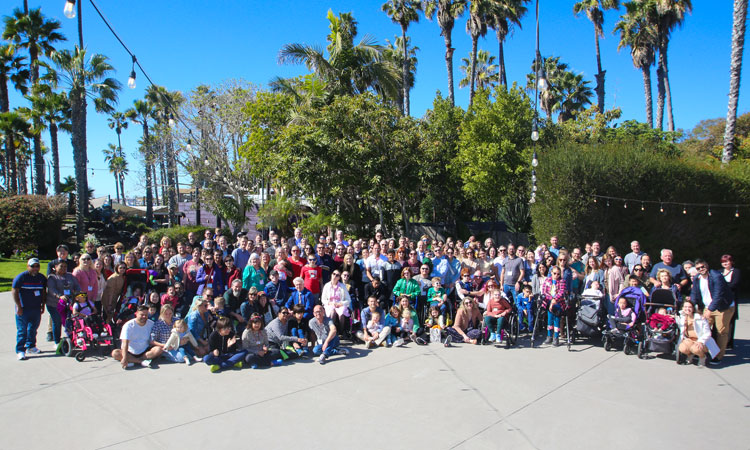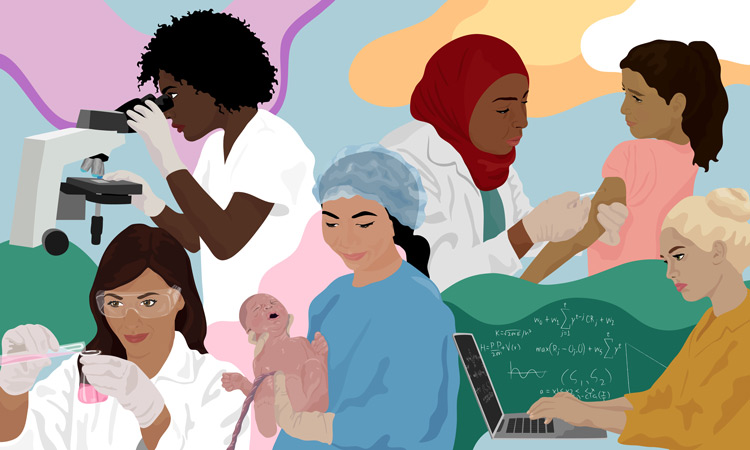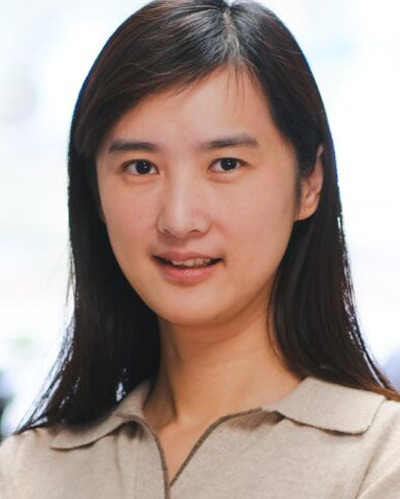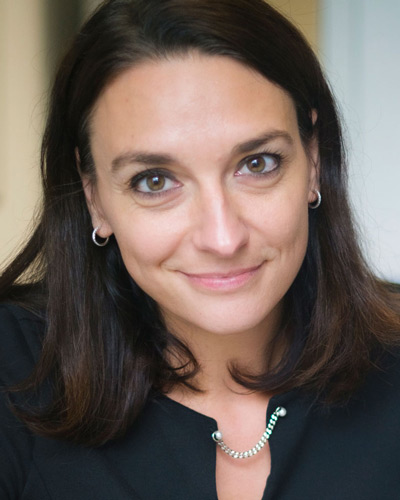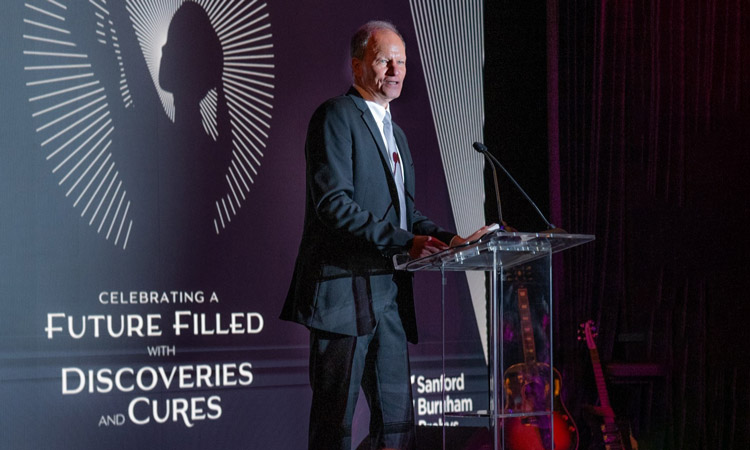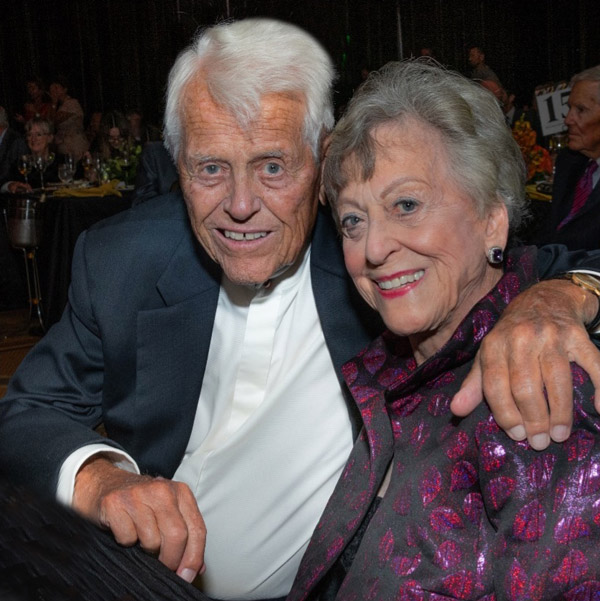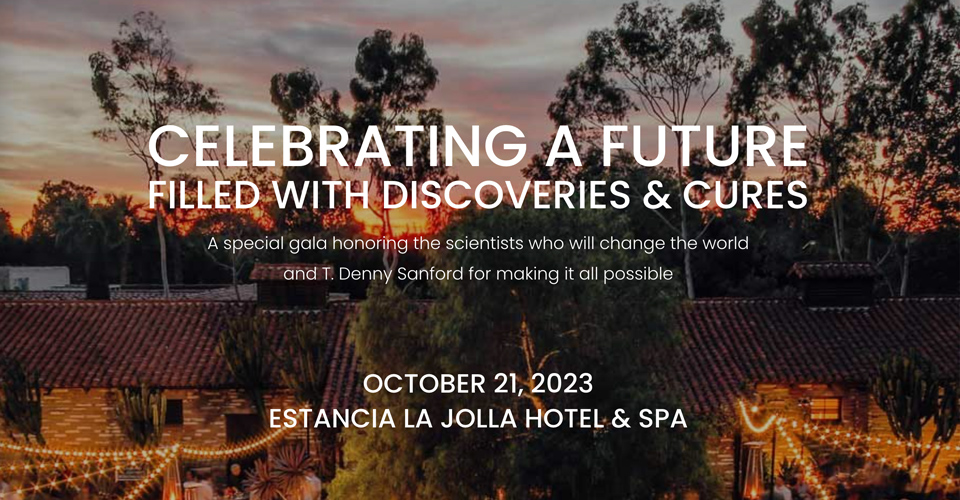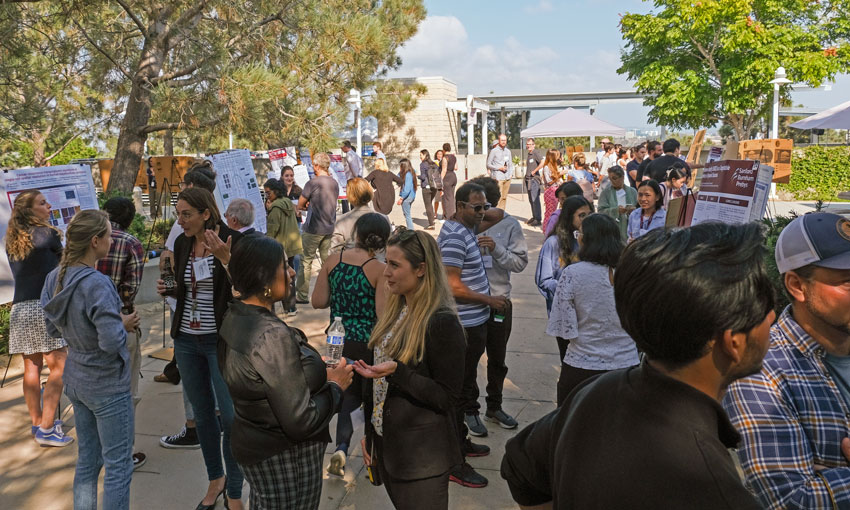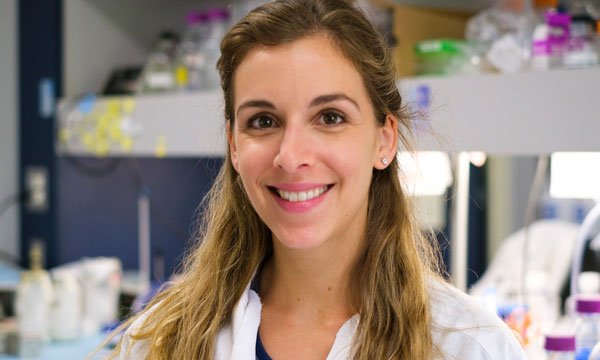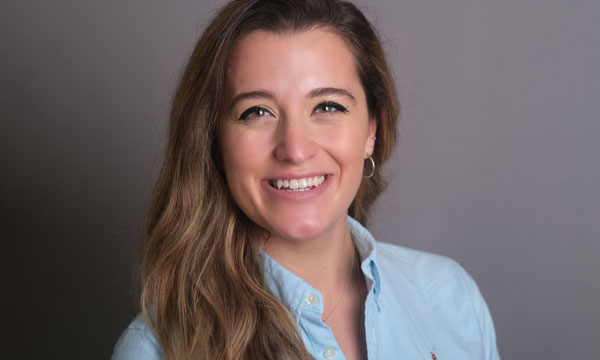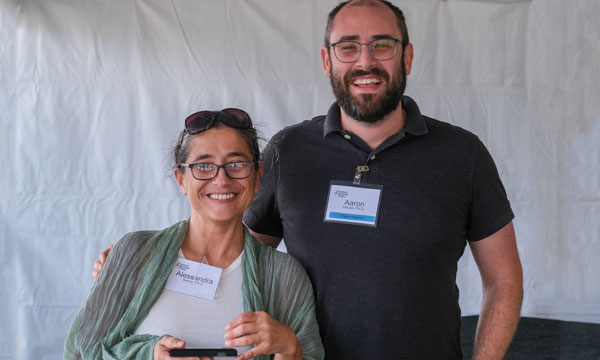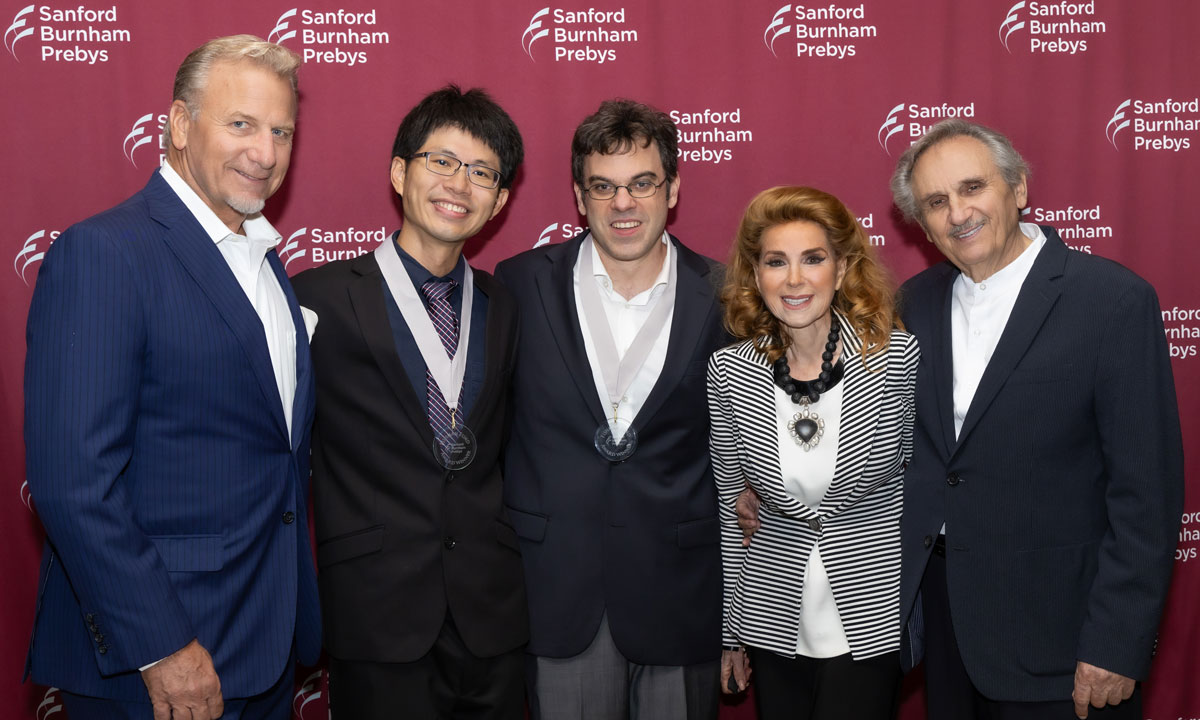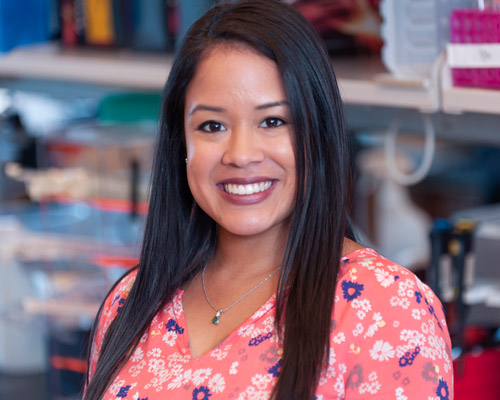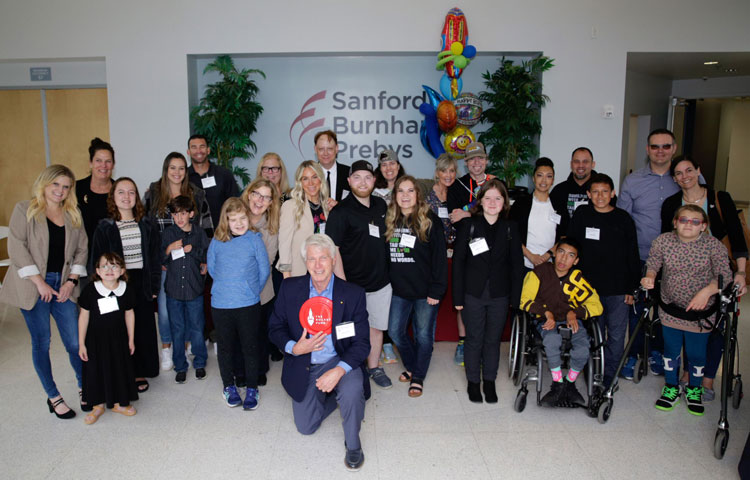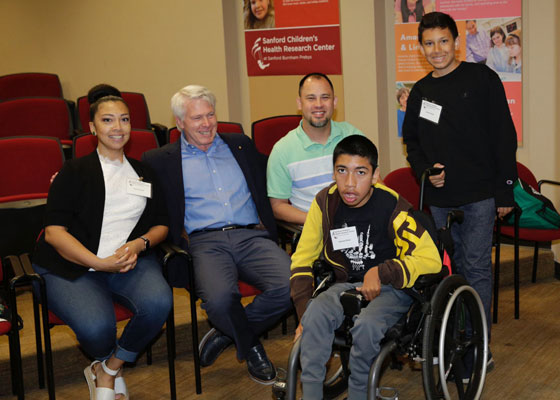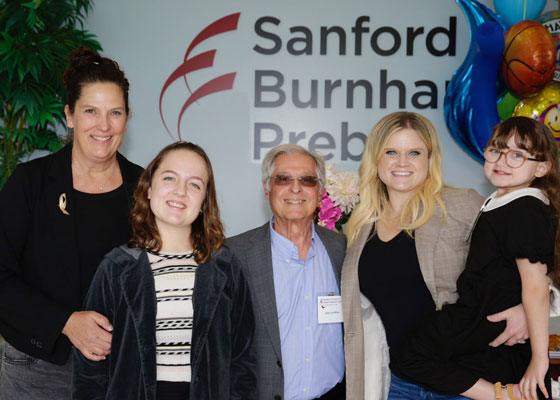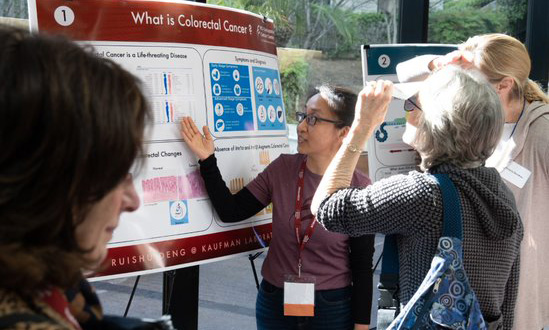The Sanford Burnham Prebys Rare Disease Day Symposium brought patients, families, physicians, scientists, industry experts and advocates together with a focus on congenital disorders of glycosylation.
Sanford Burnham Prebys, in partnership with CDG CARE and the Sanford Children’s Health Research Center, hosted a Rare Disease Day Symposium in San Diego from March 1-3, 2024. The goal of the event was to share the latest scientific developments from researchers studying congenital disorders of glycosylation (CDG), and to foster new perspectives, ideas and collaborations to accelerate the creation and implementation of better therapies and treatment plans for those living with CDG.
CDG is an umbrella term for more than 190 disorders caused by mutations that impair glycosylation; the complex process by which cells build long sugar chains that attach to proteins called glycoproteins. CDG affects fewer than 2,000 children worldwide. When glycosylation is impaired, the sugar molecules on many of the body’s proteins are absent or incomplete, leading to serious, often fatal, malfunctions in various organ systems throughout the body.
Since 2010, Hudson Freeze, PhD, the William W. Ruch Distinguished Endowed Chair, professor and director of the Human Genetics Program, and director of the Sanford Children’s Health Research Center at Sanford Burnham Prebys, has organized an annual Rare Disease Symposium, where scientists, doctors and families gather from around the world to discuss the latest research and meet other families coping with rare diseases.
“At Sanford Burnham Prebys, we’re committed to rare disease research,” says David Brenner, MD, president, CEO and Donald Bren Chief Executive Chair at Sanford Burnham Prebys, during his welcoming remarks. “We believe we can make a unique contribution to society with this work, and in so doing make the world a better place.”
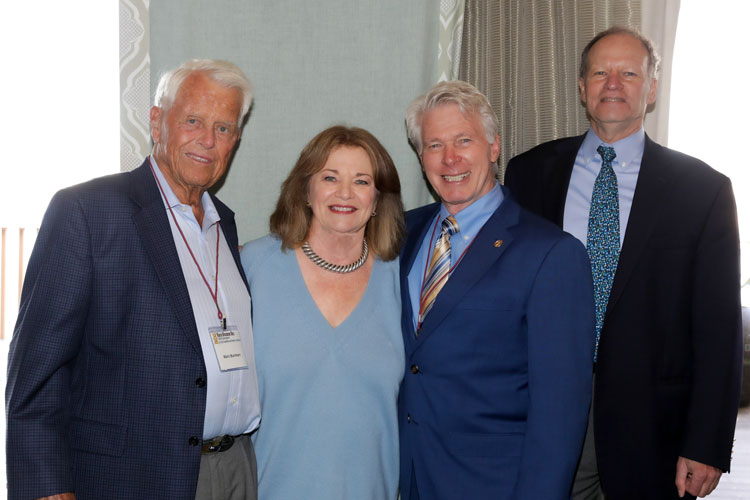
Brenner noted that Rare Research Day marked a time for academic medical centers across the US to celebrate the synergy between patients, families, physicians and scientists that is needed to advance research on all rare diseases, including CDG.
This was reflected throughout the symposium’s schedule and in the tenor of individual presentations. Patients and families were invited to give talks throughout the weekend to discuss the perspective of living with CDG or caring for a family member with CDG. The physicians and scientists who spoke consistently credited the patients and families for all they do to help raise funds and participate in research, including clinical trials that can add more appointments to already challenging calendars and routines.
The family reception on Friday, March 1, concluded the first day of the symposium with a more informal opportunity for patients, families, doctors and researchers to connect and socialize.
“This is the largest meeting we’ve ever had,” notes Freeze. “This gathering is an important part of nurturing the CDG research ecosystem by bringing experts together while also knitting us closer together with the people who really matter – the families.”
The symposium’s many sessions over three days included:
- Friday, March 1
- Scientific meeting
- Introduction and welcome from Sanford Burnham Prebys president and CEO, David Brenner; Malin Burnham and Debra Turner, philanthropists and honorary trustees; and Congressional Representative Scott Peters from California’s 52nd Congressional District
- Discussion of perspectives, challenges and triumphs led by parents, patients and advocates
- Sessions on new therapies in development, the potential use of biotin as a treatment for many CDG patients, neurological disease, and gene therapy approaches, among others
- Poster session
- Family reception
- Scientific meeting
- Saturday, March 2
- Scientific meeting
- Keynote address on “Accelerating Treatment and Cures for Rare Diseases” from Joni Rutter, PhD, director of the National Center for Advancing Translational Sciences in the National Institutes of Health
- Additional conversation about the experiences of parents and advocates
- Sessions on clinical trial updates; especially strong were drug repurposing efforts leading to new and unexpected potential treatments
- Doctor-is-in-session
- Brought together medical researchers, clinicians, advocates, patients and their families for an afternoon of hands-on collaboration in small groups
- Prior “Doctor-is-in-session” events have led to profound experiences and unlikely partnerships
- Evening reception
- Scientific meeting
- Sunday, March 3
- CDG CARE Scientific and Family Conference
- CDG clinical care and management sessions included neurophysiology and epilepsy, growth charts and hormonal abnormalities, puberty and bone health
- CDG research sessions included genetics 101, CDG updates, organoids as disease models and clinical trials as a partnership between physicians and patients, among others
- CDG resource exchange sessions included educational planning and advocacy, speech and technology, therapy interventions, special needs planning and behavioral health and family planning
- CDG CARE Scientific and Family Conference
